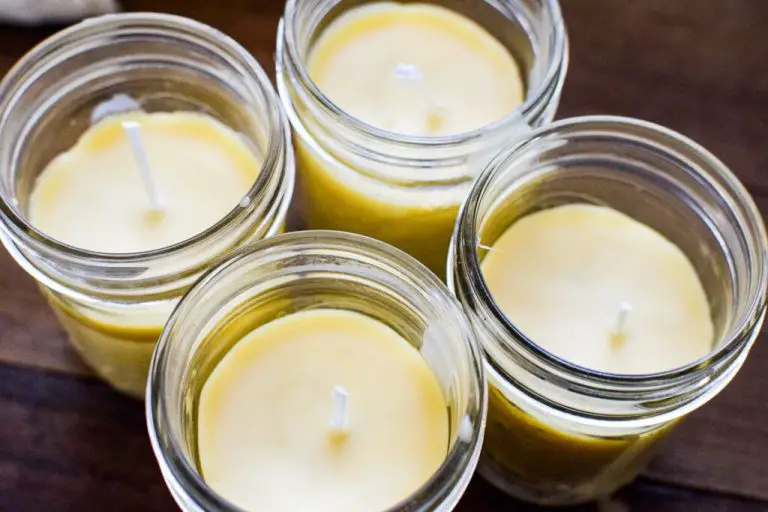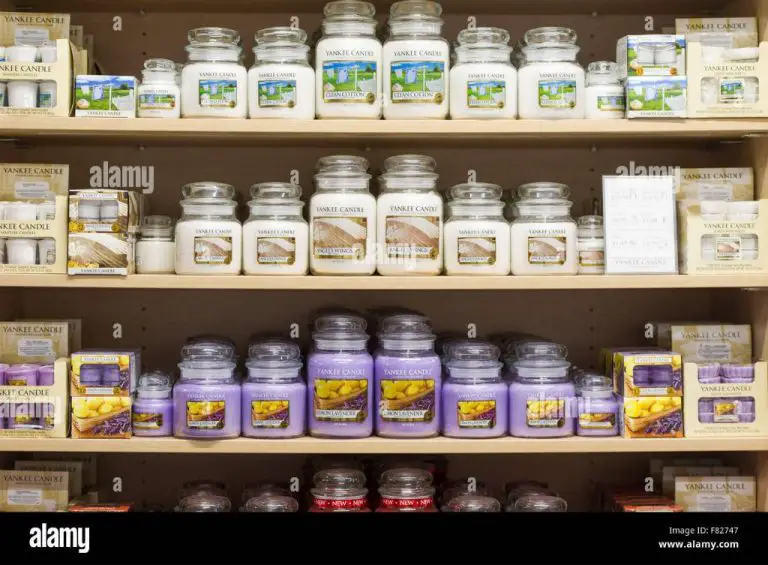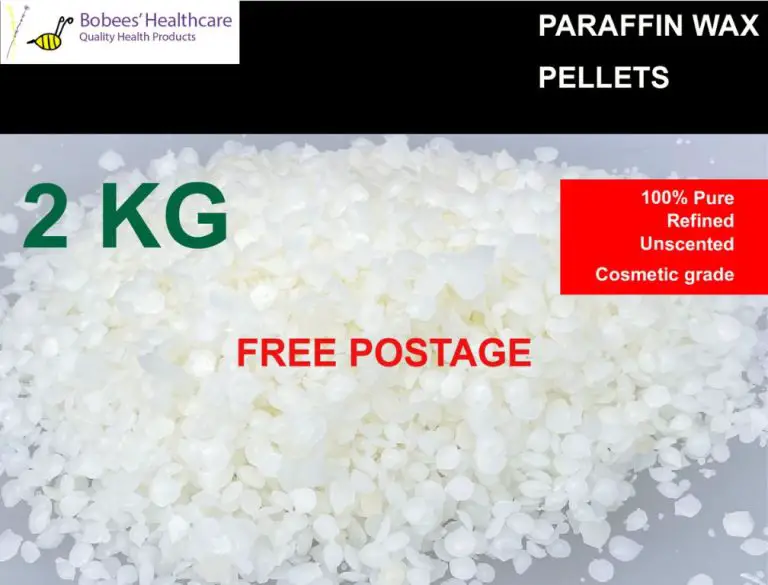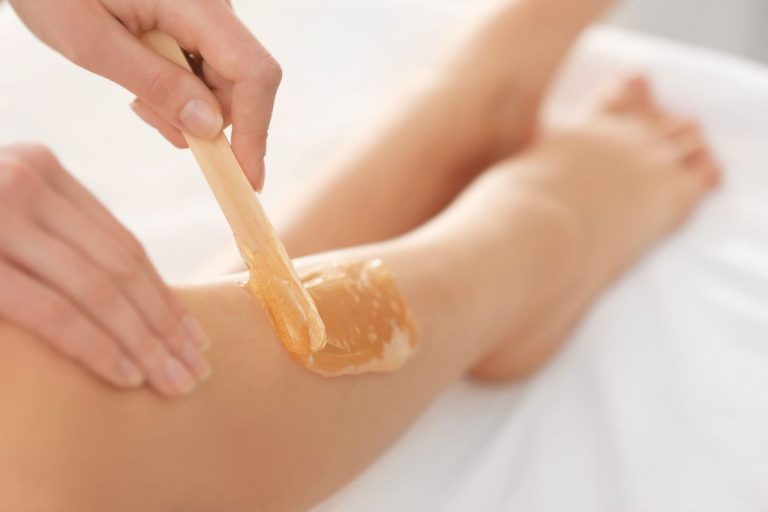Are Cotton Wicks Good For Soy Candles?
Soy candles first emerged in the early 1980s as an alternative to paraffin wax candles. Soy wax is made from hydrogenated soybean oil and became popular due to its renewable and environmentally friendly properties. The history of soy candles can be traced back to Michael Richards, who invented soy wax in 1992 [1].
There are several types of wicks used in candle making, including cotton, paper, wood, and zinc core wicks. The wick is a crucial component in candles, as it controls factors like burn rate, wax pool depth, and melting point. When making soy candles, the wick material and size must be carefully considered to optimize performance.
This leads into an ongoing debate over which wick material is best suited for soy wax. Cotton and paper are common, but some argue that wood and zinc core wicks have advantages. This article will dive into the pros and cons of different wick types for soy candles.
Pros of Cotton Wicks for Soy
Cotton wicks are known for their excellent absorbency. Cotton fibers naturally soak up melted wax and fuel the flame. This helps promote full wax pool coverage so the candle burns evenly down to the edges. Cotton’s superior absorbency prevents tunneling.
Compared to other materials like wood or paper, cotton produces much less soot and smoke when burned, resulting in a cleaner burn. This makes cotton ideal if you want to minimize black smoke residue on your candle jar’s interior walls. Cotton’s cleaner burn helps preserve your candle’s look and fragrance.
Cotton is also a very common wick material that’s readily available. It’s an affordable option used by many candle makers. You can easily find quality pre-tabbed cotton wicks from reputable suppliers like CandleScience.
As one source notes, “Cotton wicks produce less smoke and soot than most other materials. Having a cleaner burning candle is important…” (Source)
Cons of Cotton Wicks for Soy
While cotton wicks are commonly used in soy candles, they do have some drawbacks that makers should be aware of:
Mushrooming – Cotton wicks can develop a mushroom-shaped carbon buildup on the tip from burning, which impedes capillary action, disrupts the melt pool, and causes sooting [1]. Frequent trimming is required to counteract mushrooming.
Tunnelling – The wick burning down too quickly can create a tunnel down the center of the candle. Cotton’s high capillary action increases the risk of tunnelling in soy wax [2].
Drowning – Cotton wicks absorb a lot of wax which can lead to the wick drowning. This makes it harder for the wick to stay lit.
Sooting – Carbon buildup causes black smoke and soot. Cotton burns hotter which increases sooting. Proper wick sizing and trimming can reduce, but not eliminate, sooting issues.
Pros of Other Wick Materials
Besides cotton, there are some other popular wick materials to consider for soy candles:
Wooden Wicks
Wooden wicks are made of natural wood fibers and provide some benefits over cotton:[1]
- They produce a pleasant crackling sound when burning, creating a cozy ambiance.
- The woodgrain pattern is attractive and rustic looking.
- Wood absorbs more wax than cotton, resulting in a stronger and steadier flame.
- Since they don’t bend or fray as easily, wooden wicks are easier to trim.
Paper Wicks
Paper wicks are thin and flat wicks constructed from natural fibers like cotton and wood. Some advantages of paper wicks include:[2]
- They have a low profile that may complement certain candle vessel designs.
- The flat shape allows wax to pool evenly around the wick.
- Made of porous materials, they absorb wax well for an even burn.
Tin Wicks
Tin wicks contain a tin wire core coated in paper or cotton. Benefits of tin wicks are:[3]
- The tin core makes the wick very stiff and easy to center in the candle.
- The rigidity allows the wick to remain upright through the entire burn.
- Tin draws heat away from the wick, reducing issues like mushrooming.
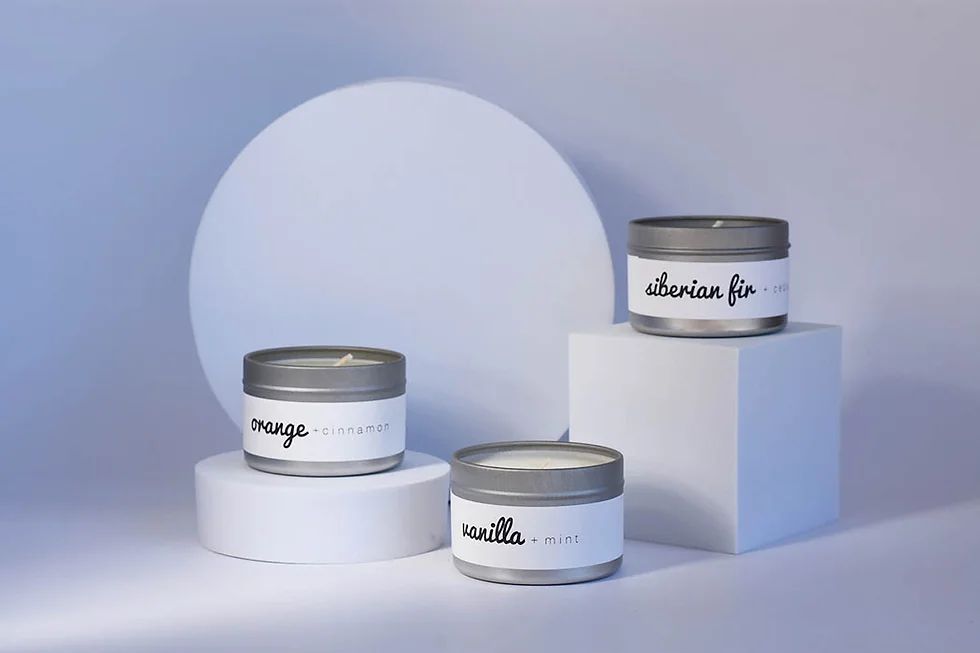
While these alternative wick materials have pros, cotton may still be ideal for many soy wax blends.
Cons of Other Wick Materials
While cotton is the most commonly used wick material for soy candles, there are some potential downsides to using other materials like wood, paper, or hemp:
Cost – Materials like wood and hemp wicks can be more expensive than traditional cotton. This added cost gets passed onto the consumer. For example, a 100 pack of cotton wicks may cost $5-10 whereas a comparable pack of hemp wicks can be $15-20 (Source: https://happypiranha.com/pages/why-we-dont-use-soy-wax).
Availability – Alternative wick materials may not be carried by all candle making suppliers, especially smaller operations. Cotton is easy to find but other types may require special ordering. Soy candle makers need reliable access to wick materials.
Performance – While materials like hemp and wood can burn cleaner, they may not offer the best performance for every soy wax candle. Factors like fragrance load, diameter, wax type, and more can impact how well these wicks work (Source: https://medium.com/@clairemasonskinhealth/toxic-chemical-free-soy-candles-illuminate-your-space-nourish-your-health-743f0c6d1e52). Cotton’s versatility makes it a safer choice.
Wick Diameter Considerations
When choosing a wick for soy candles, the thickness or diameter of the wick is an important factor to consider. Thicker wicks and thinner wicks each have their pros and cons.
Thicker wicks tend to burn hotter and produce taller flames in soy candles. This can help melt the wax pool faster and provide a stronger scent throw. However, thicker wicks also burn faster and can cause more soot or smoking issues (Wick Guide – CandleScience).
Thinner wicks burn cooler and slower, which allows the wax pool to spread out more evenly. Thinner wicks can help reduce issues like tunneling in soy candles. However, if the wick is too thin, it may struggle to keep the melt pool liquid and the flame could drown (Lonestar Candle Supply).
For votive or small container soy candles, a thinner wick around CD 4-8 is often recommended. For larger jars, a thicker wick like CD 10-12 allows the melt pool to spread sufficiently. Testing different wick sizes to find the right balance for each soy candle design is key.
Wick Trimming
Trimming your soy candle wicks is an essential part of proper candle care and helps promote an even, clean burn. Here’s what you need to know about when and how to trim your wicks:
You’ll want to trim your wicks before each use. This removes any leftover carbon buildup from previous burns and ensures the wick lights evenly and cleanly. Avoid long black ends on the wick, as this is carbon residue that can cause excess smoke.
Trim your wicks to 1⁄4 inch before lighting. Use scissors or wick trimmers specifically designed for candle wicking. Avoid leaving metal bits in the wax if using scissors. Trim straight across to leave the wick flat and perpendicular to the wax pool surface.
You may need to trim again mid-burn if the wick starts mushrooming into a carbonized mass. Tap off the carbonized portion first before trimming back to 1⁄4 inch height. This will help the wick burn cleanly for the rest of the session.
Trimming about once per hour of burn time is a good rule of thumb. But you may need to adjust depending on your particular soy wax, wick type, and other factors like fragrance load.
With a properly trimmed wick, you’ll get a brighter flame, maximized wax pooling, and minimized smoke. This makes sure your soy candle burns safely and evenly down to the bottom of the container.
Reader Q&A
Below are some common questions about wicks that readers may have when deciding which wick to use for their soy candles.
What wick size should I use for soy candles?
The best wick size to use depends on the diameter of your candle container. As a general guideline, use a smaller wick for narrower containers and a larger wick for wider containers. For example, ECO 2 or CD 4 work well in containers with a diameter of 2-3 inches. For 3-4 inch containers, try ECO 4 or CD 8. Refer to manufacturer’s recommendations for exact wick sizing.
Do I need a special soy wax wick?
You don’t necessarily need a special wick just for soy wax. Many standard wicks like ECO, CD and HTP wicks work well in both soy and paraffin wax candles. The most important factor is matching the proper wick size to the candle diameter. However, zinc core wicks may not burn as well in soy wax.
How do I stop soot with soy wax candles?
To prevent sooty soy wax candles, trim the wick to 1⁄4 inch before each burn and make sure the wick is not too large for the diameter of the candle. A smaller wick paired with occasional wick trimming is the best way to minimize soot.
The Best Wicks for Soy
Based on extensive testing and experience, the best wicks for soy candles overall are:
- CDN Pre-Tabbed Zinc Core Wicks – These provide excellent scent throw and a clean burn with soy. Use a wick sizing chart to pick the right diameter.
- Eco-2 Square Braided Cotton Wicks – These give great performance in soy containers of all sizes and minimize issues like tunneling.
- HTP 104 Wicks – The flat shape throws scent well without getting too hot. Size up about 1/2 inch for soy.
For the best results, make sure to trim wicks to 1/4 inch before each burn. Allow the wax pool to fully reach the edges before extinguishing. When testing new wicks, evaluate for an even burn, wax pool diameter, mushrooming, and scent throw.
Conclusion
In summary, cotton wicks are generally a good choice for soy candles. The natural fibers provide a consistent burn and reduce issues like soot and clogging that can occur with synthetic wicks. However, wick diameter and proper wick trimming are crucial for optimal performance. Larger diameter wicks may be needed for soy than paraffin to account for the slower melt pool. When trimmed to 1⁄4” length, cotton wicks encourage full melt pools and minimize tunneling and drowning issues in soy candles. While no wick is perfect, with some testing and adjustments cotton wicks allow soy candle makers to produce quality candles that burn cleanly from start to finish.
For the best results with soy candles, start by testing recommended wicks like ECO, CD, HTP12, and RRD rather than going with the default wick size. Trim wicks before each burn, allowing 1⁄4” above wax pool for proper capillary action. Monitor candles as they burn and make adjustments to wick diameter and trimming if needed. With some experimentation, soy candle makers can dial in the right wick to maximize soy’s excellent scent throw and produce candles that burn evenly down to the bottom.

